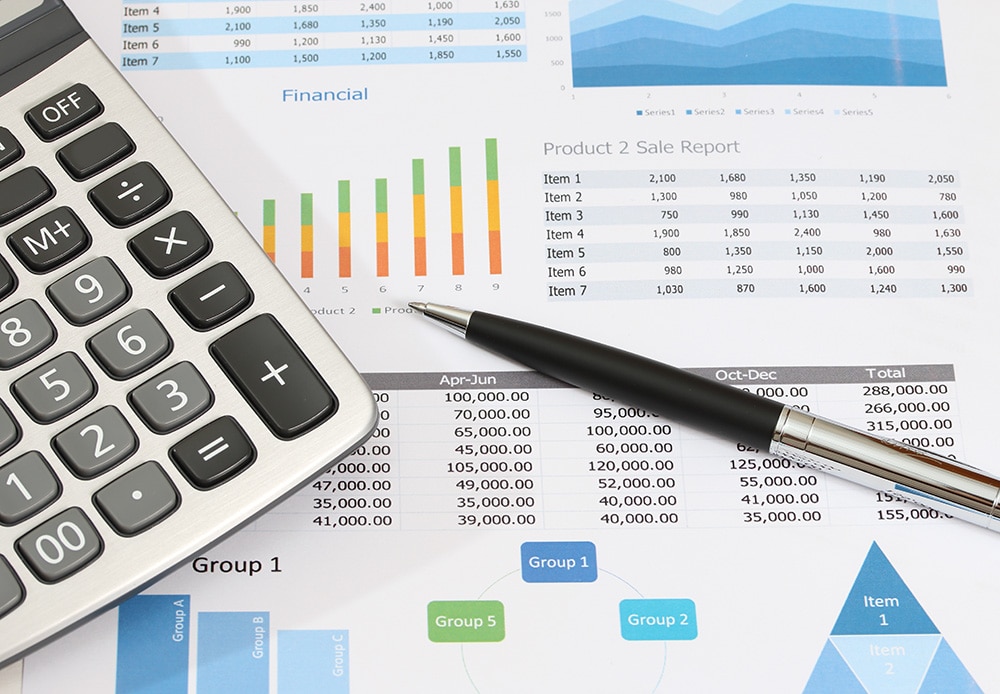Every industry has its own special jargon – the accounting world does too. To help you better understand that jargon, here are 24 terms from the accounting world that every business owner should know.

24 Accounting Terms Every Business Owner Needs to Know
1. Accounts Receivable
Accounts receivable includes money owed by customers to another company or individual as payment for goods and/or services. It is considered an asset on a company’s balance sheet, because there is an understanding that the clients are legally obligated to pay this amount.
2. Accruals
This is a list of expenses that have been incurred but are not yet paid, or a list of sales that have been completed but not yet billed. Accruals relate to items that will hit your books imminently, either in the positive or negative, but haven’t yet.
3. Accrual Basis Accounting
The accrual accounting method allows for some flexibility when expenses and income are recognized. In this method, companies report when income is earned and when expenses are incurred. There are rules that dictate when income is and isn’t recognized for the reporting period, as well as best practices for dealing with bad debt expenses.
4. Assets
Assets are everything that a company owns. In most cases, accounting assets are tangible assets, such as equipment, property, land, cash and tools. But intangible assets, such as stock, copyrights, patents and trademarks, can also fall under this category.
5. Bad Debt Expense
This is an entry on a company’s income statement that tracks non-collectible accounts receivable (i.e. “bad debt”) during a specific period of time.
6. Balance Sheet
A balance sheet is an overview of a company’s financial status, including assets, liabilities and equity.
7. Capital
Commonly referred to as the amount of money a company has to invest or spend on necessary items for the business, capital is money that can be accessed, not including company assets or liabilities. It is often referred to as “working capital.”
8. Cash Basis Accounting
Cash basis accounting is a straightforward accounting method that is particularly useful for small or new businesses. Revenues and expenditures are recorded when payments are received and sent. It is especially valuable for companies that don’t maintain inventories.
9. Depreciation
Defined as the decrease of an item’s value over time due to use, depreciation is especially important for tax purposes, as larger pieces of equipment that directly impact the company’s ability to make money can be written off on tax returns based on their depreciation. These are items that are used for more than a year.
10. Dividends
Dividends are company earnings that are distributed on a regular basis to company shareholders. Dividend amounts or percentages are typically decided by a corporation’s board of directors and can be issued as cash, shares of stock or other property.
11. Equity
Equity is the amount of money that has been invested in the company by its owners. If the company is small with only a handful of owners, this can also be referred to as “owner’s equity.” If the company has many different owners, or if the company’s ownership has been parsed out via stock options, equity can also refer to ownership collectively held by shareholders.
12. Expenses
There are typically four types of expenses: fixed, variable, accrued and operational.
13. Fixed Expense
Fixed expenses stay consistent from month-to-month, year-to-year. This typically includes expenses like salaries, rent and so forth. These costs are not affected by fluctuations in sales, production or the market.
14. Variable Expense
Variable expenses are tied to the company’s production. These costs can go up or down based on increases and decreases in production or sales.
15. Accrued Expense
Accrued expenses are single accounting expenses that are being reported but haven’t yet been paid.
16. Operational Expense
Operational expenses are costs that are necessary for a company to conduct business.
17. Fiscal Year
A fiscal year is a period of time that a company uses for accounting purposes and in preparing financial statements. The fiscal year can coincide with the calendar year; however, it can also be different, such as October to September or July to June. Fiscal-year start and end dates are normally determined by the company and may depend on how long it will take to close out the books for the year and prepare all financial statements for federal and state tax submittals.
18. Forecasting
The process of using a company’s historical financial data to predict future business trends, forecasting is typically used by organizations to best estimate budgets for an upcoming period of time. This often includes supply and demand figures, sales records and expenses.
19. General Ledger
This is the complete recording of a company’s financial transactions over the lifetime of the organization.
20. Journal
Journals can also be referred to as accounts. This is where transactions are recorded as they occur and before they are transferred to the official accounting record, such as the general ledger.
21. Liabilities
Liabilities are debts that a company is responsible to pay in the short or long term.
22. Profit and Loss Statement
Commonly referred to as “P&L,” a profit and loss statement is a report generated by the company or its accountant that lists earnings, expenses and net profits for a given period of time.
23. Revenue
Revenue is the total amount of money collected for goods or services sold before any expenses are subtracted. It also includes any credits or discounts for returned merchandise.
24. Trial Balance
Trial balance is an exercise used to confirm final figures before generating financial statements. It requires placing debits and credits on a worksheet to ensure that any current balances are correct.
Now that you have a good understanding of the vocab, the next steps should be learning the seven accounting formulas every business owner should know.